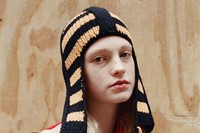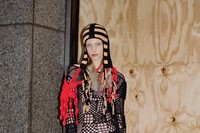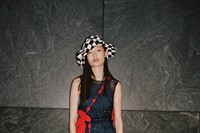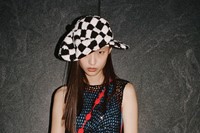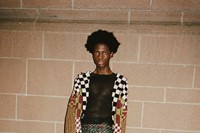As Judy Turner makes its New York Fashion Week debut, American designer Conley Averett discusses his obsessive love of the city, and why knitwear makes a solid investment
- Who is it? Judy Turner is the New York-based brand designed by Conley Averett giving knitwear a new lease of life
- Why do I want it? Glamorous, high-quality hand-knitted and crocheted dresses, cardigans and balaclavas that will stand the test of time
- Where can I find it? At judy-turner.com and on ssense.com
Who is it? For Judy Turner’s first ever outing at New York Fashion Week, the young knitwear brand held an intimate presentation at Michael’s – an old restaurant in midtown Manhattan with a bygone, 1980s feel. “It’s got a lot of old New York details that are getting washed away now,” says Conley Averett, citing the green velvet chairs, quirky art, and mirrored columns. Averett is the 31-year-old designer behind the label, which he founded in 2019 and named after two old Hollywood starlets: Judy Garland and Lana Turner.
Averett grew up in Alabama, but he was taken with New York after first visiting at the age of 12. “I was always a New York freak,” he says over Zoom from his Tribeca studio a few days before his Autumn/Winter 2022 presentation, a couple of mannequins ominously propped up behind him. “It [Michael’s] reminds me of the excitement I had about living here and moving here when I was young. Seeing places like that when I’d be walking around in the neighbourhood.”
Averett moved to the city to study Strategic Design Management at Parsons, although he insists that his real education came while interning at Khaite – a womenswear brand helmed by Catherine Holstein that deals in minimalist basics. “I grew up at this company. It’s like my home in a way,” he explains. Averett has worked at Khaite since 2016, and now splits his time there and at his own brand – a rare feat of design job-juggling in an exclusive, competitive industry. “My choice to have a brand of my own has been supported by Khaite, whereas in previous corporate structures, it was always taboo,” he says. “We’re both in New York doing different things, but making up what is the bigger picture, and it’s exciting to have two different shares of that.”
Why do I want it? Averett takes knitwear – a casual, sometimes frumpy fashion category – and transforms it into something glamorous, delicate and sexy. Shot on the streets of New York in an off-the-cuff lookbook by Grace Ahlbom (perhaps better known by her Instagram handle, @sk8rmom420), the A/W22 collection features black, sequined crochet dresses and skirts that spiderweb across the body, knitted balaclavas and more eccentric headgear, an androgynous tartan skort and a series of kaleidoscopic, checkerboard cardigans.
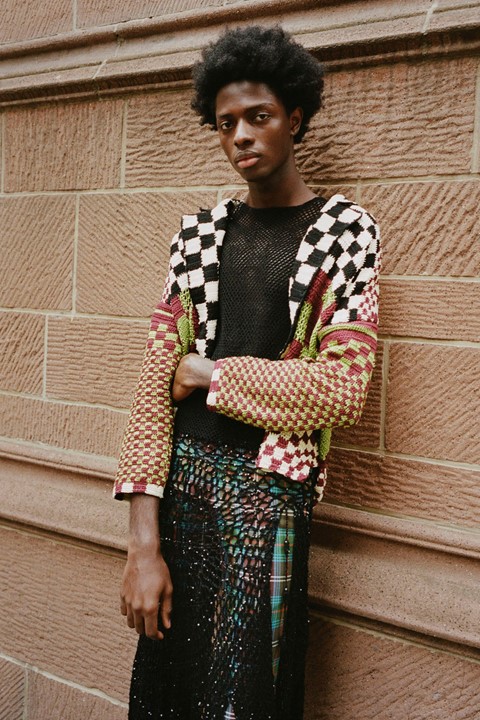
Averett strategically set up his knitwear brand with business in mind, not a burning passion for the craft – an honest admission in an industry where many insist they were ’born’ to be a fashion designer. “I was not ever a knitwear freak,” he says. “Given how fashion is unpredictable, it felt like knitwear was a safe category to invest in. I also felt like there was so much missing in that world for myself.” The Judy Turner team is made up of hand-knitters and “crochet ladies” scattered around New Jersey, Brooklyn, Manhattan and Queens, while the brand also occasionally works with industrial factories in Italy and Turkey for machine-made pieces. “I actually don’t even have the attention span to sit and knit a complete garment,” he admits. “I’ve been lucky to have so many expert knitters around me, to help create the ideas.”
Judy Turner is already stocked on Ssense, and its fans are mostly Gen Z. “The customers are these kids who like simple pieces – T-shirts, denim or the perfect sweater – curated through a vintage or retro perspective,” he says.
Despite being such a young brand, Judy Turner already has an incredibly strong yet varied visual identity. Each photographer they’ve worked with brings something different to the table; Jesse Gouveia (who recently shot Frank Ocean for the cover of the Financial Times’ How To Spend It supplement) brings low-key intimacy, Ethan James Green adds a touch of black-and-white opulence, while Tom Kneller’s photographs of men on the boardwalk at Brighton Beach look as if they’re straight from the 90s. “I just got lucky that my high standards were met,” says Averett of the photographers he’s collaborated with thus far. Speaking of people he wants to work with in the future, Averett cites Karim Sadli, and more ambitiously, David Sims and Glen Luchford. “We’re always looking toward fantasy imagery but also bouncing with realism,” he says.
Where can I find it? At judy-turner.com and on ssense.com

